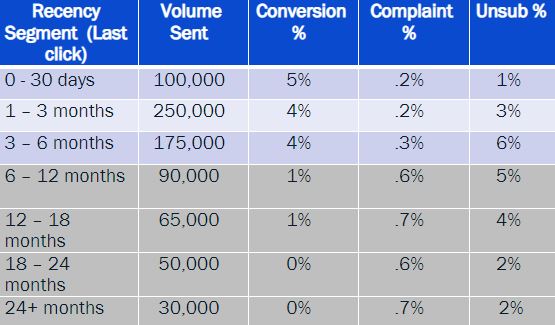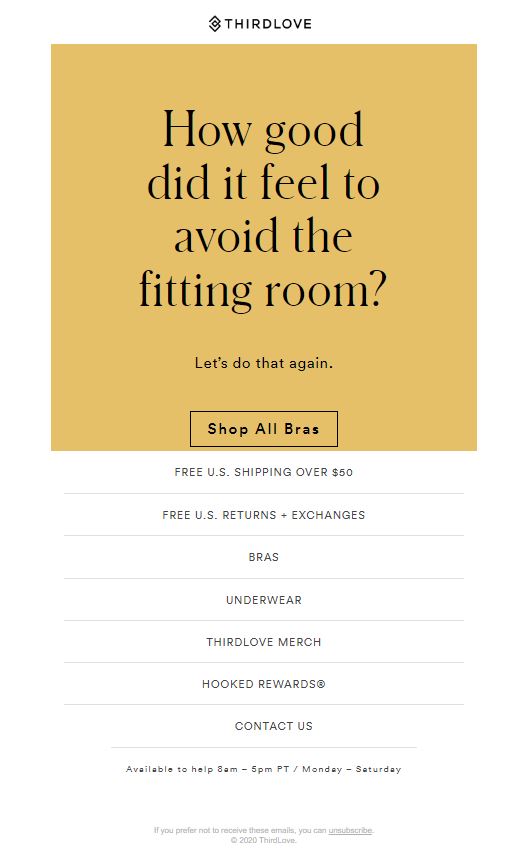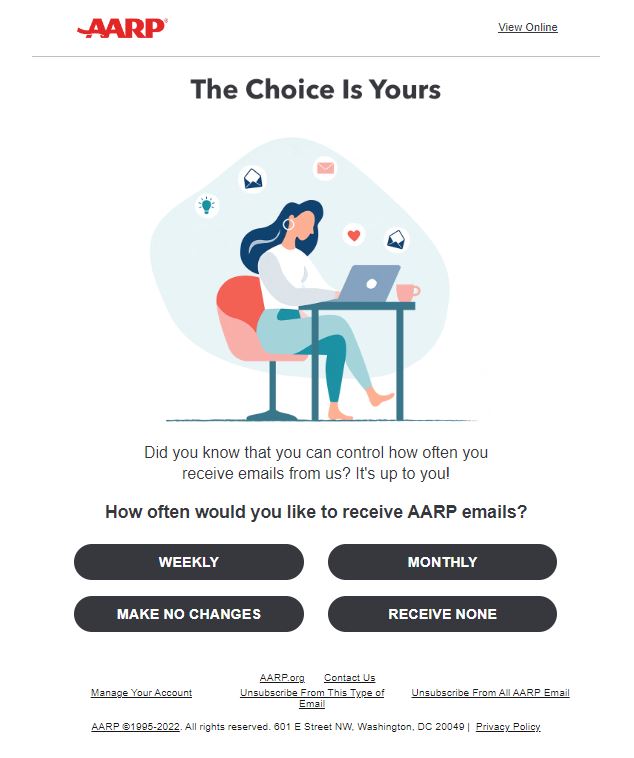
When it comes to email, there are many reasons customers may have become disengaged with your brand. Maybe they received the wrong content, heard from you too frequently, or their needs simply changed.
While it can be hard to say goodbye, it’s always better to suppress inactive subscribers than to keep them in your program and watch your engagement rates suffer.
However, you may not need to part ways just yet. Some subscribers just need the right motivation to re-engage! That’s why re-engagement campaigns are still widely considered a best practice for competitive email programs.
Let’s dive deeper into re-engagement campaigns, the value they provide, and tips you can use today to start planning a winning campaign.
Measuring engagement is more challenging than ever before
It’s always cheaper to retain existing customers than it is to find new ones. (It costs five times as much to attract a new customer!) But measuring subscriber engagement is more challenging now that Apple’s Mail Privacy Protection (MPP) makes open rates less reliable.
MPP prevents senders from using tracking pixels to measure open rates and device usage and masks recipients’ IP addresses to prevent location tracking. It accomplishes this by prefetching and caching email images at the time emails are delivered (as long as the device is connected to the internet).
This means all tracking pixels will fire, regardless of whether the recipient actually opens the message. As a result, open rates skyrocket—but not because more people are truly engaged.
This makes it difficult to determine which subscribers are truly inactive and should be included in a re-engagement campaign. However, you can overcome this challenge by focusing on metrics deeper down in the conversion funnel, such as clicks, to measure engagement.
How to know when it’s time for a re-engagement campaign
Creating a recency segmentation table (like the one below) can help you determine where your value cliff is and identify when you should send a re-engagement campaign.
Review your recency segmentation groups by creating segments based on last click or last purchase date. Then, send to each segment separately to gauge performance and identify where the drop-off is. Depending on your cadence, you may need to adjust your segments accordingly. For example, senders who send one campaign per week may need to adjust their recency segments to assess clicks within the past number of campaigns as opposed to a date range.
In this example, there’s a drastic decline in send volume and conversions once the sender emails anyone whose last click was past the six month mark. It would be wise for this sender to implement a re-engagement campaign when subscribers reach six months of email inactivity.
Tips to write a winning re-engagement campaign
Depending on your brand, there are many techniques for writing and designing a winning re-engagement campaign. Here are a few tips that could help you win back the interest of your inactive subscribers.
1. Use personalization to tell a story
Create a campaign that tells the story of the relationship between your brand and the subscriber to remind them of why they began engaging with your brand in the first place.
Thank them for supporting your brand for X amount of days, take a look back at the good times you’ve had together by including a summary of past purchases, and show them what the future holds by promoting trending products you think they’ll enjoy.
Use what you know about their purchase history, how long they’ve been on your list, and any zero-party data you have to personalize the campaign and inform which products to include. Be sure to personalize the subject line, as well, since that’s the first thing the subscriber sees—and the part that will entice them to actually open your email!
2. Show the value of your email program
What value is the subscriber gaining from being subscribed to your email program? It’s important to clearly communicate this value so they feel incentivized to stick around.
Value can be monetary, taking the form of coupon codes and discounts. But it can also include information (be the first to know!), tips and tricks (how to use the products), and contests (be featured on our Instagram!).
As an email marketer, it’s easy to get lost in the mindset of “Sell! Sell! Sell!” So it’s important to take a step back and put yourself in the consumers’ shoes: What would convince you to stay subscribed to your email program if you were in their place?
Thirdlove, for example, reminds subscribers that by signing up for their services, they’ll find value in no longer having to use a fitting room to try on new clothes.
3. Offer other ways to stay connected
While email happens to be the top communication channel in the digital marketing realm, some customers prefer to interact with your brand in other ways. This can be a hard pill to swallow for most email marketers, but it’s better to keep the customer interacting with you in some capacity than to let them go for good.
In your re-engagement campaign, highlight your social media channels and include an option to sign up for SMS (if your company is utilizing that avenue). You can also work with your social media manager to promote an email-exclusive coupon code that encourages followers to re-engage with your brand via email.
4. Promote your preference center
Let subscribers know that if they’re willing to re-engage with your brand, it’ll be on their terms. Promote your preference center in your next re-engagement campaign so subscribers know they have a say in how frequently they receive your emails and which products are promoted to them. If the reason they’d disengaged was because they were receiving too many emails, this allows them to share their concerns without needing to unsubscribe.
5. Frictionless unsubscribe option
This one is non-negotiable. If someone wants to stop receiving your messages and they’re not given the option to unsubscribe, they’ll fall to the alternative, which is to hit the spam button. Providing the option to unsubscribe from your email program is crucial to maintaining a good sender reputation, protecting your deliverability, and even remaining in compliance with global privacy laws.
Don’t be sneaky by trying to hide or redirect the unsubscribe link. Be sure to feature it prominently. Spotlighting your unsubscribe option sends out a positive signal that you’re a transparent and trustworthy sender. AARP, for example, features the Receive None option just as prominently as the other cadence options in their preference center email.
Since you’re trying to re-engage subscribers because they’re heading into inactive territory, you may have high unsubscribe rates with this campaign. But it’s better that you let them unsubscribe than annoy them into complaining. Plus, for the subscribers who do stick around, you can feel confident it’s because they wanted to—not because they were forced to.
Know when it’s time to let go
Taking advantage of these tips is a good place to start planning a winning re-engagement campaign. Just remember: If you send a re-engagement campaign series and subscribers don’t take action, it’s time to say goodbye and move them to your suppression list.
Looking for more tactical tips to reach the next level of email performance? Check out the latest on-demand episode of our new expert-led webinar series, Inbox Insiders.


